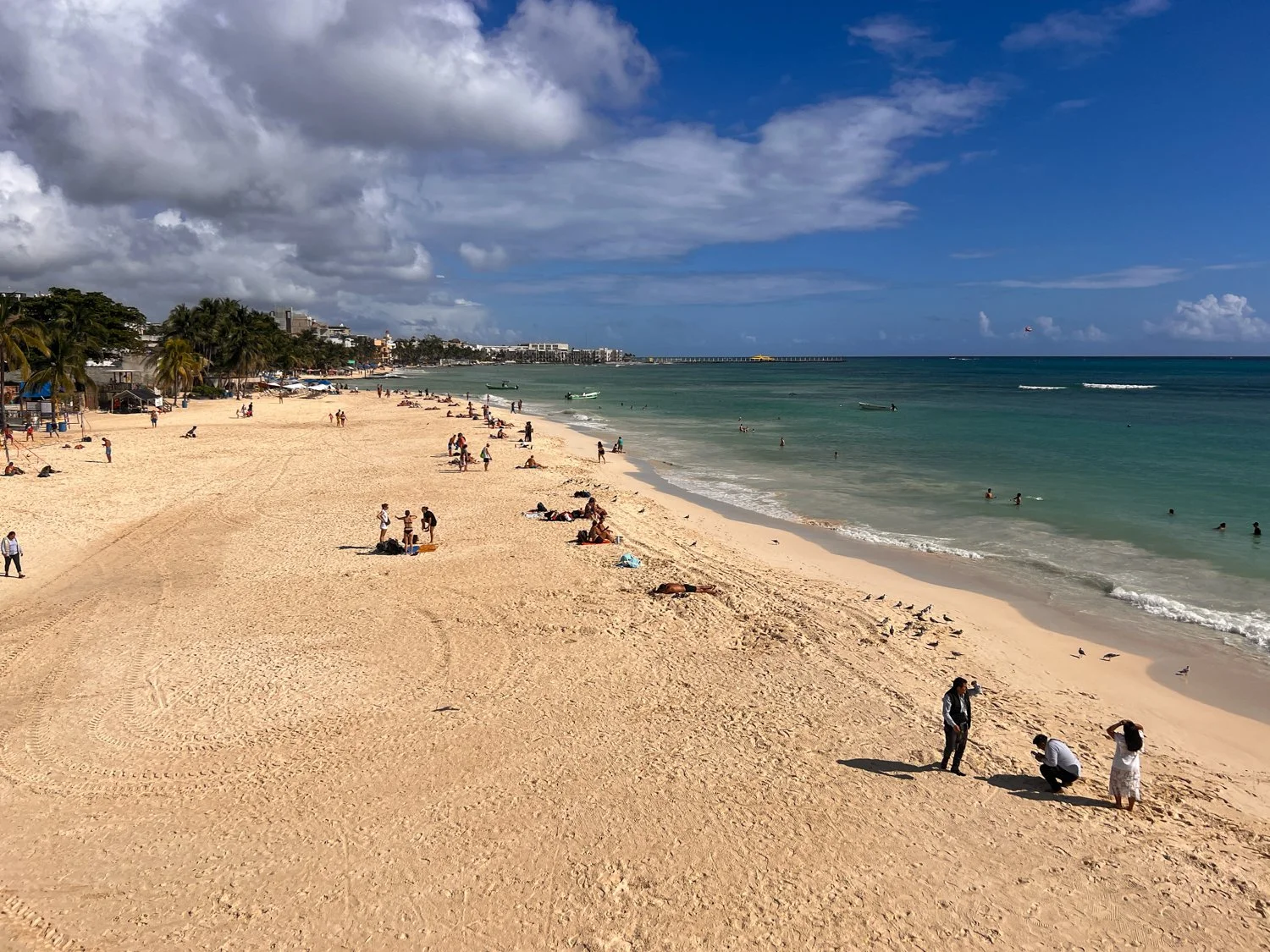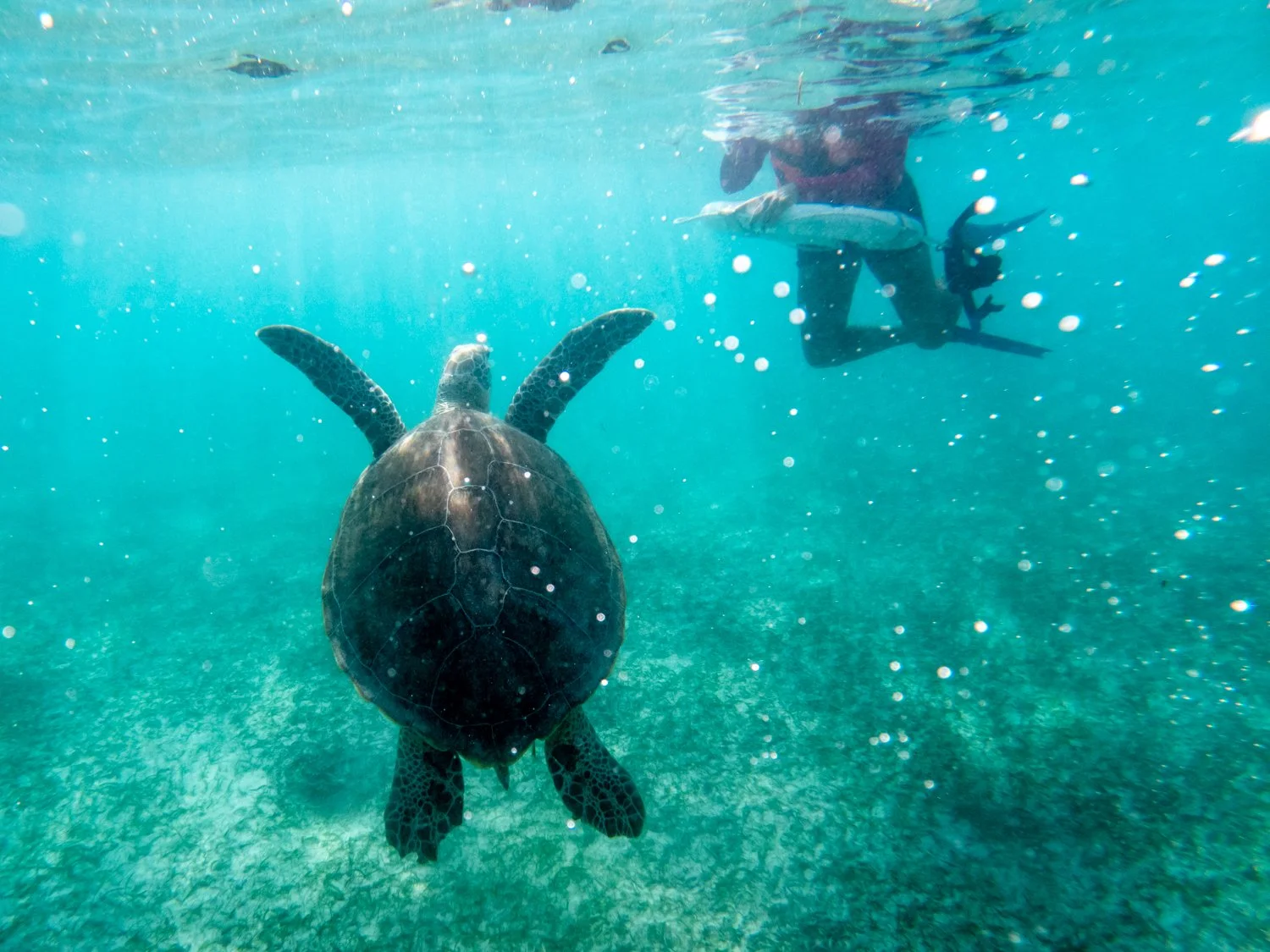Playa Del Carmen
After three weeks of travelling through real Mexico — wandering through the back streets of numerous cities and towns, exploring multiple Mayan ruins, joining in on the local festivals and braving local transport — we decided it was time for a break. A little taste of luxury. A chance to bask in the indulgence of an all-inclusive resort in Playa del Carmen.
And what better place to do it than the Hilton, where the margaritas flow endlessly, the pillows are fluffier than a baby alpaca, and the staff is trained to respond to your every wish.
The thing about Playa del Carmen is that, unlike the rest of Mexico, it isn’t particularly… Mexican. It’s more like the Gold Coast with mariachi music playing faintly in the background. Here, pesos are just a suggestion with prices mostly listed in US dollars to cater for the thousands of Americans that fly here for a weekend ‘Girls Night’ or shotgun wedding.
A can of Coke? That’ll be $6. A beachside cocktail? Better take out a mortgage. And if you’re looking for authentic Mexican souvenirs, fear not—there’s an abundance of hand-carved Mayan masks made in China.
The heart of it all is 5th Avenue, the town’s famous pedestrian strip. Think Las Vegas meets Tex-Mex meets an American shopping mall. Fancy some Subway or Starbucks? You got it. Want a Hard Rock Café t-shirt that says “Playa del Carmen” but was manufactured in Indonesia? No problem. Looking for tequila? Well, you'll pay triple what you would anywhere else in Mexico.
Many travel blogs and websites warn about the so-called dangers of venturing beyond the 5th, but let’s be honest—these concerns often come from many Americans that live in their own bubble oblivious to a world outside the US of A. Step just a few blocks away—to 15th or 20th Street—and suddenly, you’re in Mexico again. The souvenir shops disappear, replaced by small taquerias where the tacos cost less than bottled water, the Zócalo hums with life and the aroma of irresistible marquesita (a crepe rolled and filled with bannanas antella or numerous other sweet toppings) fill the air.
The same goes for the beaches. The stretches near the town center are pleasant, but head just a few blocks south, and you’ll find yourself among the locals where volleyball games replace overpriced beach lounges.
Back at the Hilton, though, it’s easy to forget any of this exists. The infinity pool sparkles under the sun, the breakfast buffet offers more variety than any foodhall, and the only thing you need to worry about is whether to order another piña colada or margarita poolside.
While this was our chance for a week of relaxation, and you could easily spend your entire time within the hotel grounds, this is not in our nature. So we spend the days exploring further afield.
First up snorkelling with the turtles in Akumal Bay. The brochures promise crystal-clear waters and graceful sea turtles gliding through the seagrass, but reality? It’s more like swimming in a giant, murky turtle soup, elbow-to-elbow with an army of life-jacket-clad tourists. If you’ve ever snorkeled the Great Barrier Reef, where the visibility is like peering into a high-definition aquarium, Akumal feels a little more like wearing foggy goggles in a public pool.
Adding to the charm is the strictly controlled experience with designated swimming zones, tour groups are corralled like schoolchildren, bobbing awkwardly in compulsory bright orange life vests, and a guide ensuring you don’t have too much fun.
The turtles, for their part, seem entirely unbothered, lazily munching on seagrass as another wave of flailing snorkelers drifts overhead.
While the turltles were memorable for all the wrong reasons, the cenote was not. Snorkeling in Cenote Nohoch Nah Chich is less like your typical swim with colorful fish and more like drifting through an ancient, flooded cathedral. It is the world’s second-largest underwater cave system, with over 376 kilometers of submerged passages. While it is possible to dive here, we snorkled in the crystal-clear water that makes it feel like you’re floating in mid-air. with only the light from torches to stop you from accidently disapearing down the labarynth of passageways, we glide past the limestone stalactites which dangle like nature’s chandeliers, casting shadows on the cave walls.
When you search for Talum it does not take long before the glossy travel articles are swamped with less flattering articles. Here is just one that sums up the concerns:
“this is a place of pothole-filled streets, overpriced taxis, terrible traffic jams, and out-of-touch yuppies, celebrities, influencers, wannabe gurus, COVID deniers, and well-to-do folks looking to “find themselves” in overpriced retreats, hotels, and bars.”
The town that was once a quiet, bohemian paradise is now a place where eco-chic resorts and overpriced acai bowls reign supreme, and where the only thing truly "local" is the resentment of the people who still call it home. Our guide, a woman with a deep love for her country, gently advised us to skip the hotel strip altogether, explaining how the rapid commercialization had eroded Tulum’s authentic charm, priced locals out of their own town, and turned it into a playground for influencers perfecting their downward dog on the beach. So, we did the sensible thing—we ignored the “must-see” boutique resorts and headed straight for the Tulum Ruins instead.
Perched dramatically on a cliff overlooking the turquoise Caribbean, the ruins of Zamá (as the Mayans originally called it) are proof that oceanfront property was prime real estate long before Instagram made it a trend. Built around 1200 AD, Tulum was one of the last great Mayan cities, a bustling hub of trade and spiritual significance.
The main attraction, El Castillo, is a stone structure that looks like it was designed specifically to be on postcards. Strategically positioned for both defense and astronomical alignment, it once served as a lighthouse guiding Mayan traders safely through the treacherous reef. Now, it mostly serves as a backdrop for Instagram captions and selfies which - yes - we had to do.
Like many of the ruins there are many locals that call this home with the army of iguanas that have claimed the ruins as their personal sunbathing lounge. These prehistoric-looking reptiles perch majestically atop crumbling walls, eyeing tourists with the kind of indifference usually reserved for bouncers at exclusive beach clubs. They pose for photos (sometimes better than the influencers), and occasionally startle unsuspecting visitors by darting out from the shadows.
So, is Playa del Carmen really Mexico? Well, yes… but also, not really. It’s Mexico-lite, a place where the margaritas are twice as expensive, the tacos come with NO spicy salsas, and the beaches are filled with tourists who have not attempted to learn even one spanish word.
But hey—after three weeks of adventure, sometimes a little overpriced, Americanized paradise isn’t the worst thing in the world. So one more stop in the lap of luxury to go - Cancun.




















































